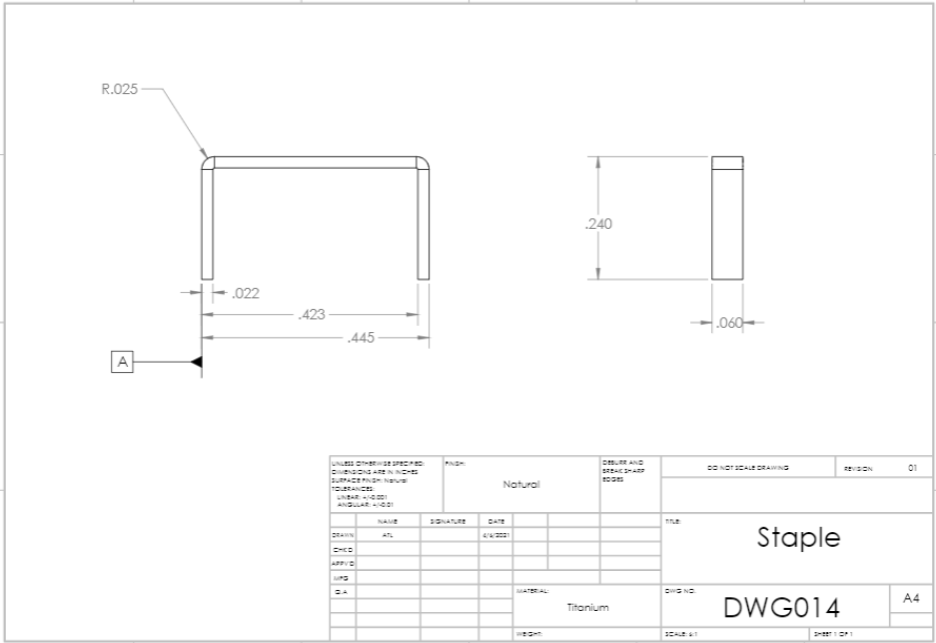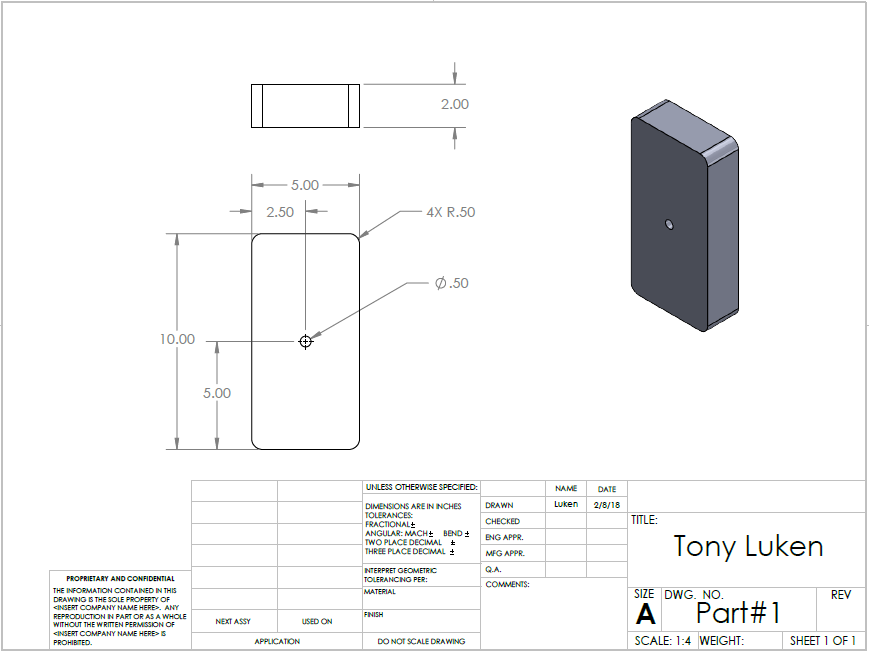MECHANICAL DRAWING
A mechanical drawing or sketch is an invaluable communication tool when designing and making any widget, part, or product. A complete mechanical drawing consists of views (images) to describe the geometry of the object, dimensions to specify the size and features of the object, and a legend with information regarding the interpretation of the drawing such as the scale, unit of measure, global tolerances, drafter information, etc.
Luken’s Blacksmith Shop requests that you create a mechanical sketch for guidance on fabrication and ornamental iron jobs. Generally, a formal engineering drawing is not required. We simply need a sketch with critical dimensions and enough detail for us to make the part. Sketches drawn by hand and not necessarily to scale are often sufficient because of the tolerances associated with our tools and methods. Continue reading for some tips on creating your sketch today!
CREATING YOUR SKETCH
A mechanical sketch is a systematic way of representing a three-dimensional object in two dimensions. The key to the process is breaking down the object into isometric views — ones that are only in two dimensions. Then you must dimension the critical features of the object in each view. Most objects can be sketched in three views or less.
Imagining Your Object
The first step in creating your sketch is to think about the object you want to be made. Conceptualize the shape and the appearance of the object — what does the object look like from the top, from the side, and from the front? Is the object symmetrical? Doodling or drawing snippets of the object may be helpful before sketching your final draft.
Selecting Your Views
Before sketching your final draft, it is necessary to decide the views with which you will describe your object. The typical views used are top, front, and side. When making a sketch it is best to align the features as they are seen in each view as shown in the example sketches below.
Making Your Sketch
When making your sketch, be sure to use a pencil in case you need to correct any errors. Additionally, it is helpful to use a straight edge, protractor, and compass as necessary. The drawing need not be exactly to scale, but the easier it is to interpret the shapes and sizes on the sketch, the faster we can produce your object. Be sure to draw the object in as many views as are needed. For example, if you wanted to sketch a staple, you would need two views. The front would show the crown of the staple and the second would show the side of the staple giving its thickness. In this case a view from the top is not needed because the only information it gives is the thickness, which has already been shown on the side view. The drawing for the staple is included below.
Dimensioning Your Sketch
There are many styles and conventions when it comes to dimensioning your sketches. The basic principles, however, are to include all critical dimensions (e.g., hole sizes, thicknesses) and any other dimensions necessary for reference (e.g., hole location, height, length). If your drawing is made to scale, dimensioning can be very straightforward because it allows certain quantities to be inferred — if it looks like a 90-degree angle, it is, and if it looks like two distances are even, they are unless a dimension says otherwise. If your sketch is not to scale, that is not a problem. You will just have to add more dimensions to make your intentions clear.
Finishing Your Sketch
Once you have marked dimensions on your sketch, there are just a few finishing touches that you need to add. If your drawing is to scale, write the scale on the paper (e.g., 1:1, 1:2). If your drawing is not to scale, please write “Not to Scale” on the paper. Make sure to write your name and phone number on the paper. Finally, bring your drawing to us in person during our regular business hours. We always like to talk to our customers in person so we can be certain we understand what is desired and can ask any questions that arise while looking at your drawing. See you soon!


